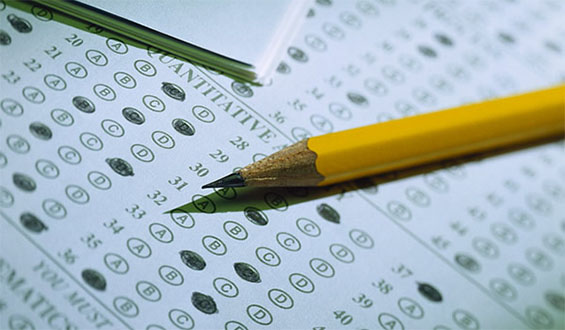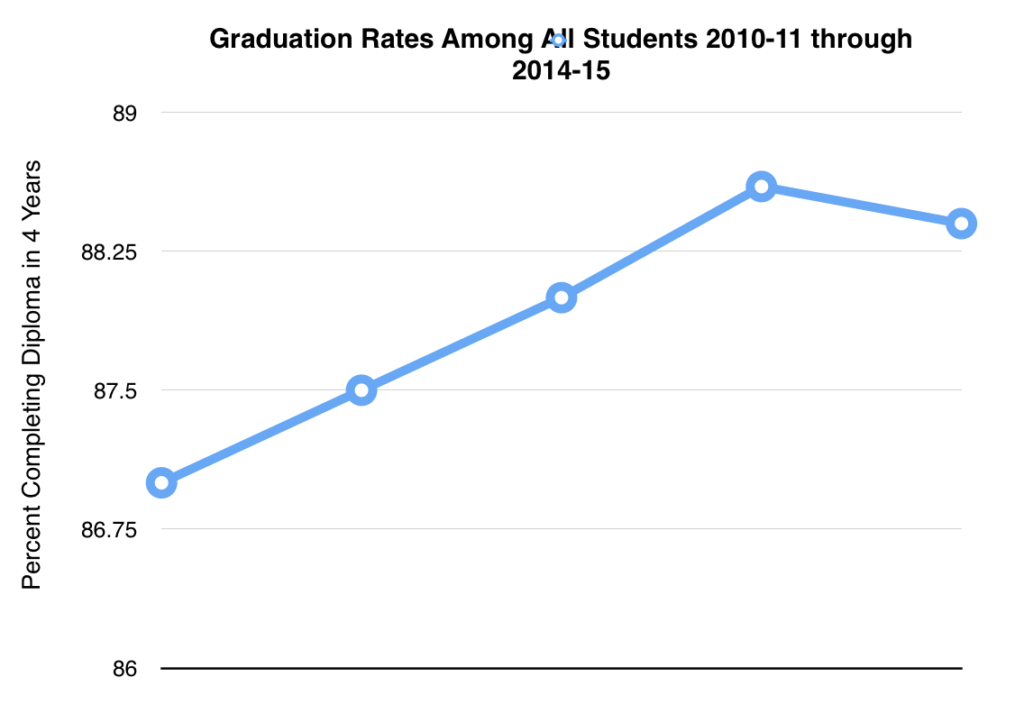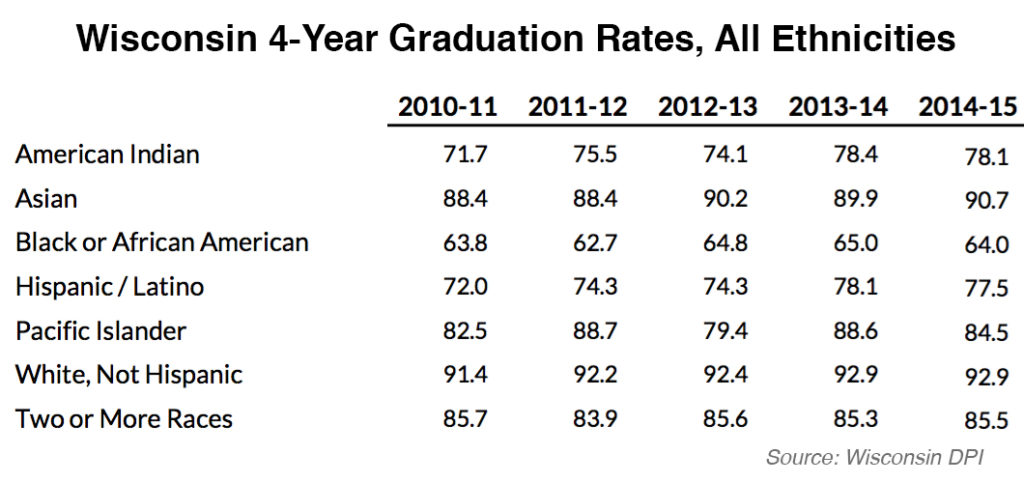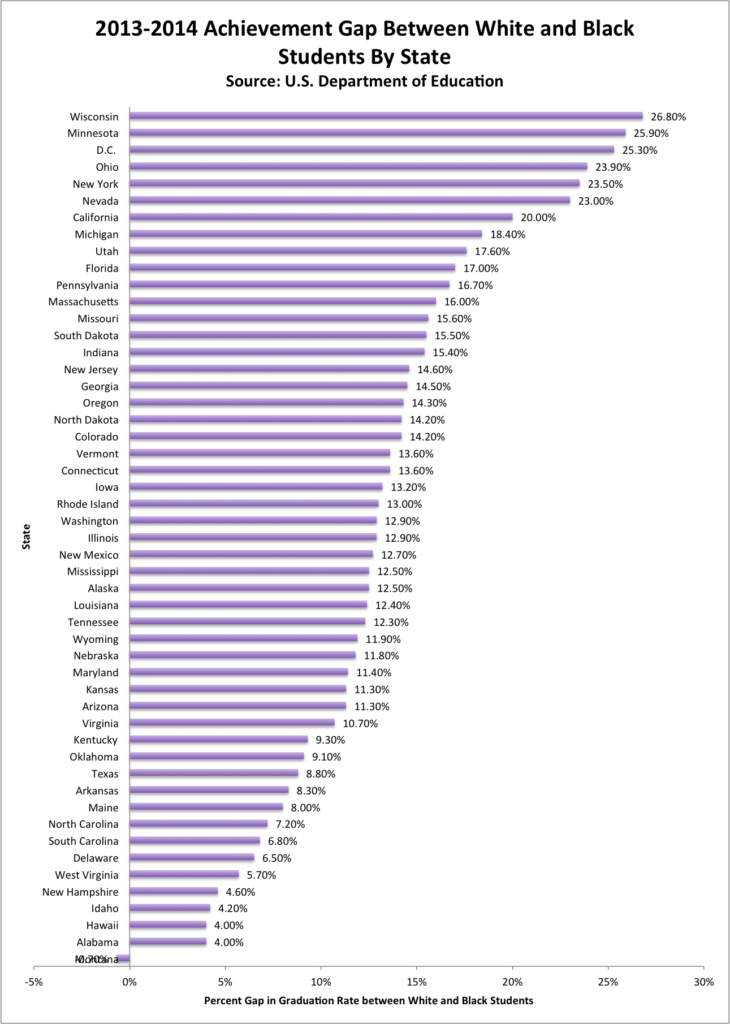
DPI report brings mixed news about state’s diploma attainment rates
[Madison, Wisc…] Wisconsin’s four-year graduation rates remained largely unchanged in the 2014-2015 school year compared with the previous year. The rate dipped a modest two-tenths of a percent year-over-year, according to a new report by the Department of Public Instruction (DPI).Between the 2014-2015 school year and the previous year, the four-year graduation rate dipped from 88.6 percent to 88.4 percent for all students. Though a relatively small decline, it’s the first time the four-year graduation rate has declined since the 2010-2011 school year.
“Wisconsin’s graduation rate remained largely unchanged from 2014, down two-tenths of a percent,” the DPI report stated.
 The graduation rate, which totals 57,698 high school graduates statewide, is also higher than the national average of 82.3 percent and his risen 1.4 percent since 2010-2011 school year, the oldest data available in the DPI report.
The graduation rate, which totals 57,698 high school graduates statewide, is also higher than the national average of 82.3 percent and his risen 1.4 percent since 2010-2011 school year, the oldest data available in the DPI report.
 The data also reveals that a persistent problem for Wisconsin has worsened: the achievement gap between white and African American students.
The data also reveals that a persistent problem for Wisconsin has worsened: the achievement gap between white and African American students.
Graduation rates among white students remained steady over the previous year at 92.9 percent. The rate is up from the 2010-2011 rate of 91.4 percent. However, the state’s 4-year diploma achievement gap between white and African American students rose by one percent to 28.9 percent in 2014-2015, compared to 27.9 percent in the previous year. The gap has increased from 27.6 percent in 2010-2011.
 Wisconsin had the highest achievement gap in the nation in 2013-2014 of 26.8 percent, according to reporting last year by the MacIver Institute based on figures from the U.S. Department of Education.
Wisconsin had the highest achievement gap in the nation in 2013-2014 of 26.8 percent, according to reporting last year by the MacIver Institute based on figures from the U.S. Department of Education.
According to that report, the graduation gap between white and black students grew from 26.3 percent in the 2012-2013 school year to 26.8 percent in the 2013-2014 school year, making it one of only 10 states where the gap grew between years. Overall, 28 states in that report saw the black-white graduation gap decrease from 2012-2013 to 2013-2014.
The size of the achievement gap suggests a lack of progress in improving the quality of education offered to minority students in Wisconsin, a problem that encouraged state lawmakers to pass legislation aimed at overhauling the poorest performing schools in the Milwaukee Public Schools.
The plan had the Milwaukee County Executive appoint a commissioner to oversee the takeover of up to five of the district’s worst schools per year. Under the original plan, each school would be removed from MPS, turned into a private school or independent public charter and all faculty and staff would have to reapply for their positions.
County Executive Chris Abele appointed Demond Means, superintendent of the Mequon-Thiensville School District. So far, very little progress has been made and there are few indications a major overhaul of failing Milwaukee schools will in fact occur.
The graduation rate declined one percent among African American students from 65 percent to 64 percent between 2013-2014 and 2014-2015 school years, a decline accounting for the increased achievement gap. The percentage of African American students attaining their diplomas in four years is up slightly from 63.8 percent in 2010-2011.
The report also shows a higher percentage of female graduates than male graduates. In 2014-2015, 90.6 percent of females graduated on time, while 86.4 percent of males did so, a 4.4 percent gap.
With the achievement gap continuing to grow here in Wisconsin despite the recent efforts of the education establishment to fix the problem, it is likely to be an issue of great discussion during the upcoming budget debate starting next January.
Check back for further analysis on this and other education issues in Wisconsin.
